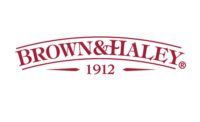
Becoming a part of the family business wasn’t always Jim Greenberg’s plan.
The
now-co-president of Union Confectionery Machinery says he made every possible
effort while in college to ingratiate himself in the marketing and advertising
industries.
Ultimately,
though, the company his great grandfather started in 1912 pulled him back in.
“I
started to do a self-evaluation [after college] of the things I enjoyed doing
and what I wanted to do in the future and the family business actually had a
lot to offer,” says Greenberg.
The
25-year confectionery industry veteran began with basic sales activity and
worked his way up through the factory before engaging in full-time sales.
Today,
as the leading supplier of used equipment in the confectionery industry,
Greenberg’s Bronx-based enterprise works with big and small businesses to equip
them with the necessary tools to operate.
While
Greenberg supplies larger companies like Hershey’s, Nestle’s and Mars, he
recalls helping the very first artisanal bean-to bar operation in the U.S.,
Scharffen Berger.
“I
started them off with their first machines and helped them to find a consultant
and to start up a factory,” said Greenberg. “I helped their business grow from
the very beginning.”
After
that project, Greenberg says the fourth-generation establishment took on jobs
from a multitude of other small start-ups looking to grow and expand.
“We
act more or less as a clearinghouse of information, as a consultant, as an
advisor and as an experienced and trusted partner,” says Greenberg “We bring
experience to every project that we do and we help [businesses] circumvent a
lot of first-time mistakes.”
Greenberg
cites over-excessive spending as the biggest error of a novice company -
zealously spending money on machinery and plants instead of focusing on sales
and marketing. He recommends that companies use an outside manufacturer for
production while they build sales and then start producing in-house if
possible.
Watching
companies grow and flourish has become the bread and butter of Greenburg’s
business. He notes that the select chocolate and candy industry has come a long
way.
“It
stands poised for continued healthy growth on the premium side and on the
artisianal side,” says Greenberg.
While
smaller companies will continue to grow, Greenberg sees the largest manufacturers,
who produce high volume products, as “losing a little bit of their profit
margin due to rising material costs and their heavy dependence on big box
retailers that exert a fair amount of pricing pressure.”
Regardless
of size, Greenburg agrees the next frontier in the industry lies not in the
product, but in the wrapper. Unlike our European counterparts, who have
implemented innovative packaging much more successfully, the U.S. industry
hasn’t fully evolved.
“Packaging
is going to improve. It has to,” says Greenberg. “[This sector] will continue
to drive innovation as a means to catching the eye of the consumer and
hopefully bringing more value to products."
In
similar fashion, Greenberg sees his company-through a combination of experience
and available equipment-bringing value to his customers.





_900x550.jpg?height=200&t=1670344885&width=200)
